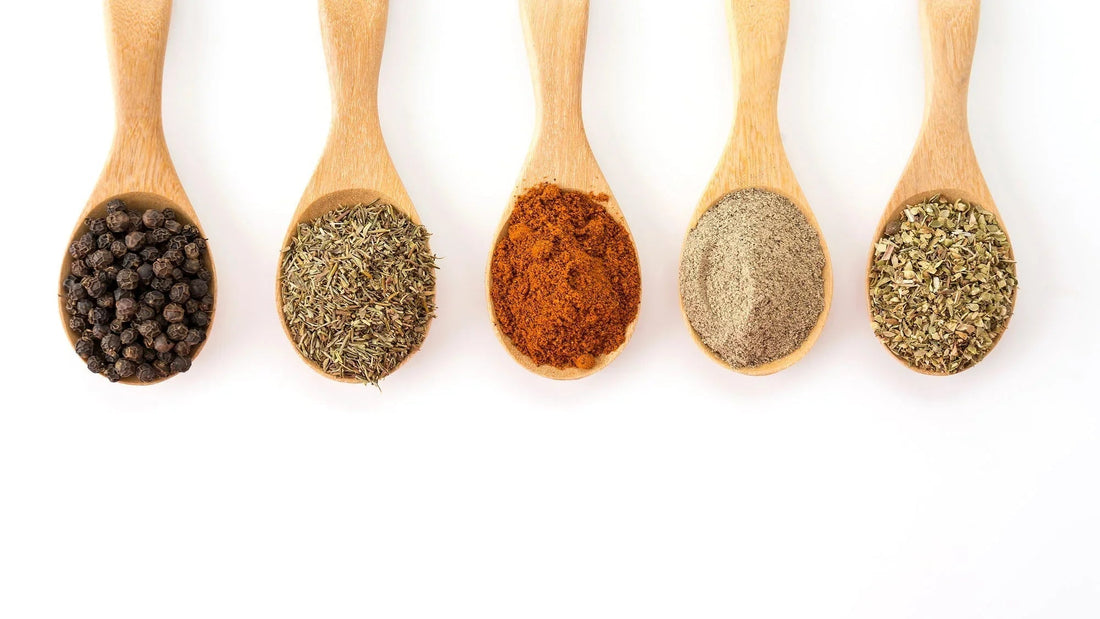
Once Upon a Time – History of Spices | Taste The Planet (Tasty Planet)
The Legend Behind the Flavor:
"Once Upon a Time in Spices" is a sensory journey through ancient spice routes, where every jar is a storybook of adventure, trade, and tradition. It’s a celebration of how clove once caused conquests, peppercorns were worth their weight in gold, and nutmeg sparked wars between empires.
Spice Story Collections:
The Silk & Sand Collection
- Saffron (Iran)
- Cumin (India)
- Sumac (Levant)
- Notes of sun-drenched markets and golden deserts.
The Island Fires Collection
- Cinnamon (Sri Lanka)
- Nutmeg (Indonesia)
- Clove (Zanzibar)
- Tales of ships, pirates, and spice kingdoms.
The Apothecary’s Blend
- Turmeric, Ginger, Cardamom
- Inspired by ancient healers and Eastern medicine.
Packaging & Experience:
- Rustic glass jars with parchment-style labels
- Each label features a short folktale or history of the spice’s origin
- Collector’s box shaped like a merchant’s travel chest
- Optional: Add a Spice Route Map scroll with pins to mark your tasting journey
The History of Spices: A Global Story of Flavor and Power
Origins: Ancient Use (before 3000 BCE)
- India, China, and Egypt were among the first to cultivate and use spices like cinnamon, turmeric, pepper, and ginger.
- Egyptians used spices for embalming, medicine, cosmetics, and cooking.
- Sumerians documented medicinal herb use on clay tablets.
- Ancient Ayurvedic and Traditional Chinese Medicine included hundreds of herbs and spices.
Spice Routes and Early Trade (2000 BCE–500 CE)
1. The Silk Road & Maritime Routes
- Spices traveled across Asia, the Middle East, and Europe via land and sea.
- Arab traders were key middlemen, guarding the origin of spices to maintain control over prices.
- Spices were worth more than gold by weight and used as currency, dowries, and offerings.
2. Roman Empire
- Romans imported large amounts of pepper, cinnamon, and cloves.
- Used in banquets, perfumes, medicine, and religious rituals.
- Roman cookbooks, like Apicius, contain spice-laden recipes.
Medieval Europe and the Spice Craze (500–1500 CE)
- After Rome’s fall, Arab traders dominated the spice trade.
- Venice and Genoa became rich trading ports by controlling spice flow into Europe.
- Spices like nutmeg, mace, saffron, and black pepper were luxury items for the elite.
- Used to preserve and mask spoiled meat in the absence of refrigeration (a common myth — spices were also used for flavor, medicine, and religious symbolism).
Age of Exploration (1400s–1600s): Empires Built on Spices
- The quest for direct access to spices led to European exploration.
Key Events:
- 1498: Vasco da Gama sails to India, breaking the Arab-Venetian monopoly.
- 1511: Portuguese capture Malacca, gaining access to Southeast Asia’s Spice Islands.
- 1602: Dutch form the VOC (Dutch East India Company) and eventually monopolize nutmeg and clove trade.
- 1621: Dutch massacre the native Bandanese people to gain control of nutmeg production.
- 1667: British trade Manhattan (New York) to the Dutch in exchange for Run Island (nutmeg source).
Colonialism and Global Expansion (1600s–1800s)
- Spices helped fund colonial expansion and shaped modern plantation economies.
- Cinnamon, pepper, vanilla, and cacao were transplanted and grown in colonized regions.
- Spice cultivation spread to the Americas, Africa, and the Caribbean.
Modern Era: Democratization of Spices (1900s–Today)
- Mass production and global trade made spices accessible to all.
- Scientific research confirmed health benefits of many traditional spices.
- Culinary globalization brought spices from every culture into kitchens worldwide.

The Lasting Legacy of Spices
- Culinary: Spice defines cultural cuisines and identities.
- Medical: Many have antioxidant, anti-inflammatory, and healing properties.
- Spiritual: Still used in rituals, incense, and traditional medicine.
